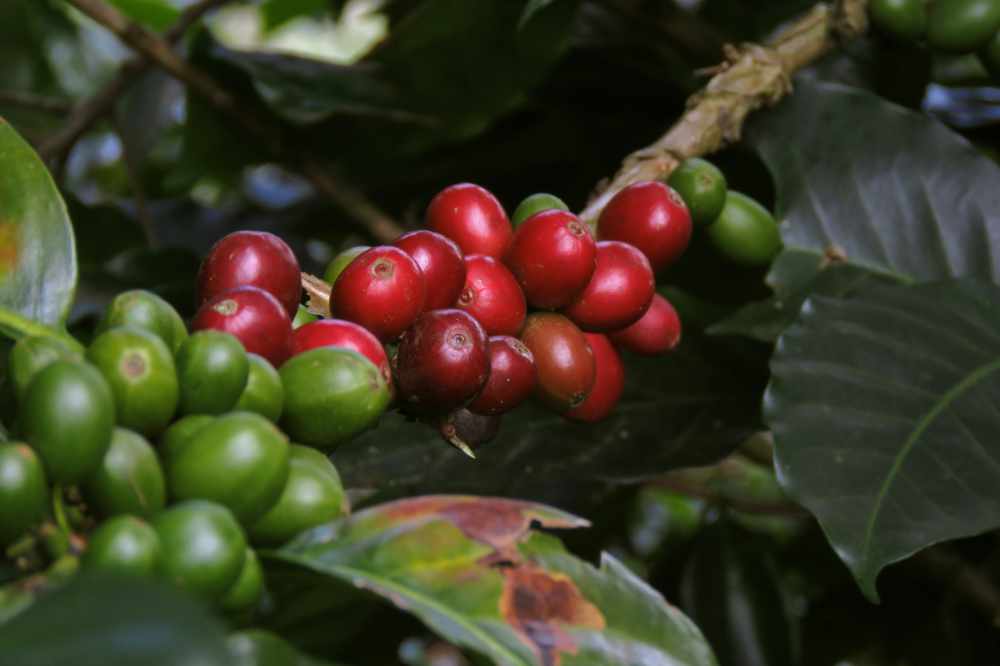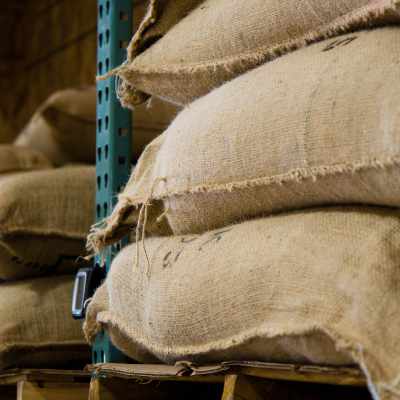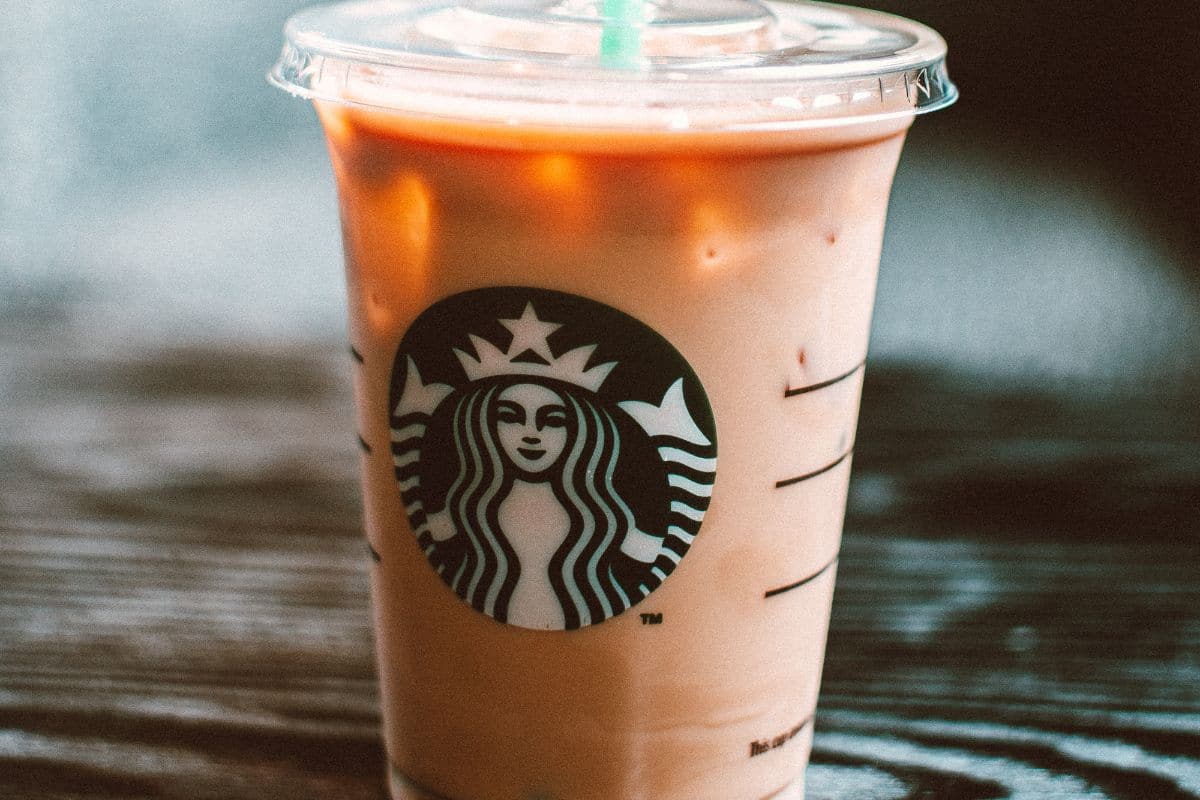Whether it’s a cold brew you prefer or a hot, creamy latte, or even instant coffee it doesn’t matter, all coffee starts out life the same way. Most coffee fans are familiar with these coffee beans but have you heard of the term coffee cherry?
When you order a specialty coffee from Starbucks you may have noticed the barista topping up the espresso machine with those all too familiar, dark brown coffee beans. Although they look like a bean there’s a hidden secret to these small brown packets that not every coffee lover knows!
The coffee cherry is exactly what it sounds like. A cherry-like, stone fruit that gives life to the much-loved coffee bean.
Here’s everything you need to know about the coffee cherry, what it is, how it gives rise to the coffee bean, and everything else you need to know about this marvelous, magical fruit.

The Coffee Cherry
What makes a bean a bean?
When you think of beans the classic image is of baked beans or kidney beans, those soft, protein-packed parcels that taste really good in chili. Beans or pulses are the seeds of plants known as legumes. They grow in pods (think of peas) and are very nutritious.
The confusion around coffee beans is that they do not fall into this category at all.
Although coffee beans may look like a pulse this is not the case at all. Coffee beans are actually the stone of the coffee fruit or coffee cherry. These grow on the coffee plant (Coffea Arabica) and mature from a white blossom to a green fruit before ripening to a deep red color.
So in summary, coffee beans are not beans at all but the pit from a kind of stone fruit.
The Anatomy of the Coffee Fruit

The coffee fruit is comprised of concentric layers surrounding the bean itself. The beans have a silver skin that contacts the innermost layer of the fruit. This surrounds the coffee bean and stays intact until it visits the roasters.
The first, inner layer of the fruit is called the parchment or endocarp. Next, there’s the pulp of the fruit also known as the mesocarp or mucilage layer, and finally the outer skin or the pericarp/exocarp.
The raw coffee fruit can be eaten although it’s generally quite tough and the skin has a bitter taste. It’s said to have 10x the antioxidants of green tea so is certainly a superfood candidate. The cherry tastes like watermelon or mango with a fragrant touch of rosewater or hibiscus.
The Processing Method
To get the coffee flavors from the coffee tree and into your cup of coffee, the fruit needs to be processed. Understanding this processing allows you to gain more appreciation for the coffee you’re buying.
When the fruit ripens the coffee farmers harvest them and then the processing begins. This typically happens in one of two methods, the natural or the washed method.
The natural method is where the whole coffee fruit is left to dry out and the cherry skin and flesh are removed afterward. The washed method sees the fruit washed away first and the beans are fermented in water.
The natural method produces a sweet and robust cup of coffee that’s full-bodied whereas the washed method gives a bright and smooth cup. Whilst the washed method is more popular in the coffee industry it does make coffee that’s higher in acidity hence the brightness in taste.

Where Does the Rest of the Cherry go?
Once the beans or coffee seeds have been collected the rest of the pulped remains of the coffee cherry is sometimes used as fertilizer on the coffee farm but more often than not it’s simply discarded, polluting waterways. This is a shame as there are loads of potential benefits stored in these cherries that could be put to good use.
The outer skins sometimes referred to as husks or cascara (Spanish for husk or pulp) are hard to touch and bitter to taste but are actually packed full of antioxidants. The dried skins can be brewed into cascara tea or coffee cherry tea that contains all these health benefits.
The tea is a relatively unknown byproduct of coffee production here in the western world and brews a beverage that’s sweet with hints of hibiscus or earthy with a tobacco taste. Although it’s far from that taste of coffee as we know it, some people say you can predict the coffee beans flavor notes from tasting the ripe coffee cherry.
What’s Next for the Coffee Bean?

Once the beans have been processed and the fruit is removed they need to be dried to around 11% moisture. The beans are still encased in the parchment layer and are laid out to dry in the sun or they are machine-dried (a bit like a huge tumble dryer). Once this stage is complete the dried beans (known as parchment coffee) are bagged ready for storage and transportation.
Before the beans are exported they are passed through machines designed to remove the parchment layer in a process called hulling. Some beans are also ‘polished’ at this stage and this is where the silver skin is also removed. This is an optional step.
Next, the beans are graded and sorted according to size, weight, color, and any imperfections. The milled beans are also known as green coffee beans and these are sold, unroasted to various coffee companies all over the world. There’s always a quality control step where the coffee is taste-tested before export to determine the characteristics of the batch.
The roasting process transforms the beans from a light color to the deep brown we are all familiar with. The length of time the bean stays in the roaster determines the darkness of the roast and so affects the flavor of the final coffee.
Dark roast coffee is bold and rich in single-note flavors like caramel and chocolate whereas light roast is bright and complex with fruity and floral tones. The origins of the coffee bean always play the biggest role in flavor notes like Ethiopian beans boasting strong berry flavors and beans from Brazil having nutty and chocolate undertones.
The beans are ground up and can then end up in your coffee machine ready to brew a delicious cup of java.
Final Thoughts
So that’s everything you need to know about the coffee cherry. It’s a super-healthy fruit that contains a seed we all fondly know as the coffee bean. It’s a little utilized ingredient but could be used for so much more if it got the recognition it deserves. Coffee is a wonderful thing and all stages of its life cycle should be celebrated.
I hope next time you take a sip of the wonderfully rich beverage we know as java, you’ll take a moment and thank the coffee cherries that produced it!





